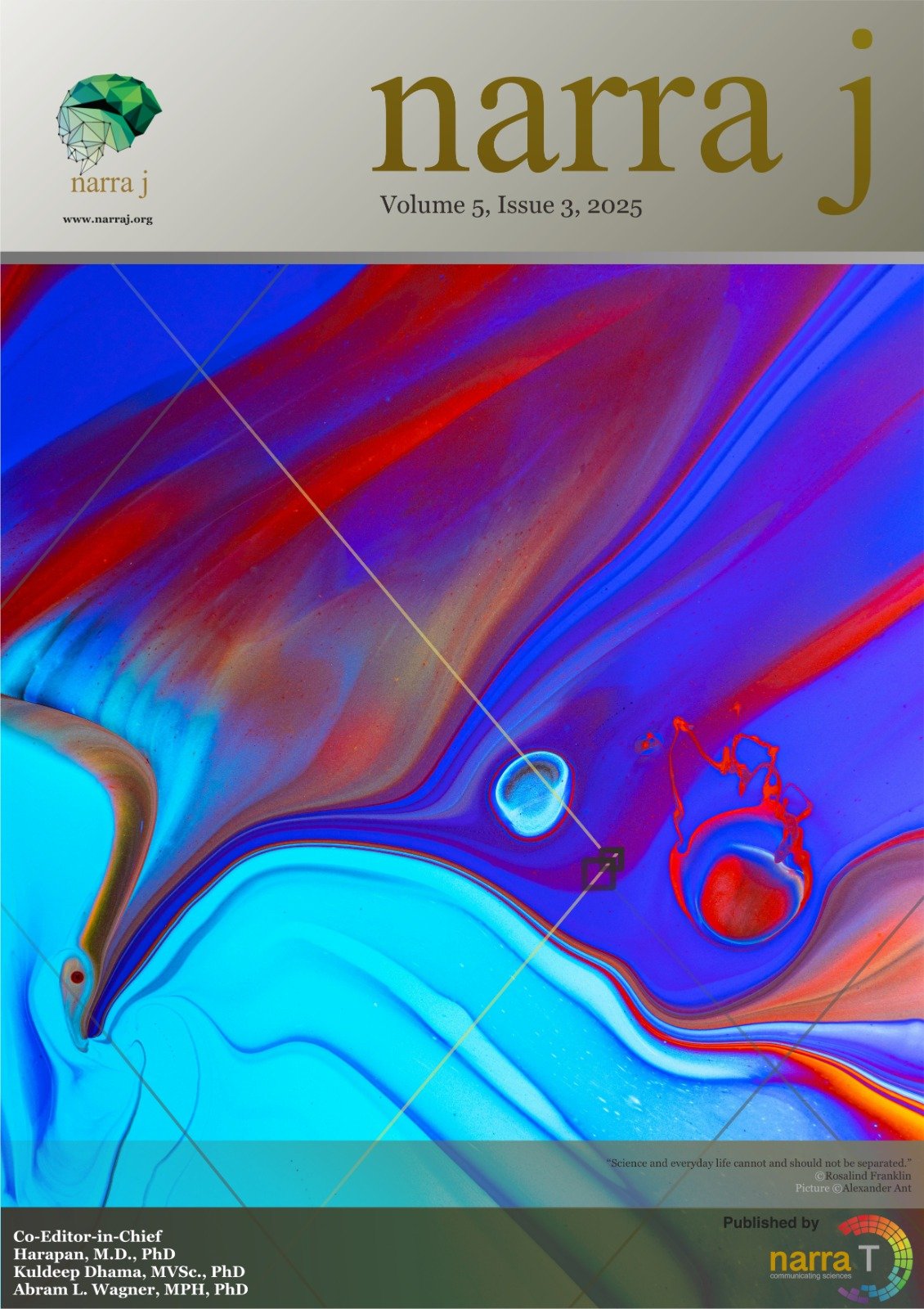Human strongyloidiasis in rural villages of South Kalimantan, Indonesia: A case series
DOI:
https://doi.org/10.52225/narra.v5i3.2515Keywords:
S. stercoralis, faecal samples, Baermann funnel method, qPCR, diagnosisAbstract
Strongyloidiasis, caused by the nematode Strongyloides stercoralis, can lead to severe complications, including hyperinfection syndrome and disseminated disease, particularly in immunocompromised individuals. However, data on its epidemiology and clinical significance in Indonesia remain scarce and outdated. The aim of this study was to investigate the presence of S. stercoralis, identify potential sources of infection, and explore associated risk factors. A case series of strongyloidiasis was identified during a soil-transmitted helminth survey conducted in two villages in Banjar District, South Kalimantan, Indonesia, between May and July 2024. S. stercoralis larvae were detected in four individuals out of 224 fecal samples (1.8%) using the Baermann funnel method, with confirmation via quantitative polymerase chain reaction (qPCR). All infected individuals were female farmers who reported nonspecific clinical symptoms. Subsequent environmental sampling revealed viable S. stercoralis larvae in soil from one of the villages. The detection of asymptomatic, infected individuals suggests that humans serve as reservoirs for ongoing transmission. In the context of open defecation practices, sustained transmission is likely unless targeted interventions are implemented. Urgent actions are needed, including community education and the provision of basic sanitation infrastructure such as latrines and access to clean water. These interventions are especially critical given that ivermectin—the first-line treatment for strongyloidiasis—is not currently available in Indonesia.
Downloads
Downloads
How to Cite
Issue
Section
Citations
License
Copyright (c) 2025 Priska PP. Kristi, Peni Kusumasari, Puspawati Puspawati, Yurniah Tanzil, Dian Nurmansyah, Muhammad Syairaji, Rizqiani A. Kusumasari, Eti N. Sholikhah, Nina Buehler, Issa Sy, Sophie Schneitler, Sören L. Becker, Elsa H. Murhandarwati

This work is licensed under a Creative Commons Attribution-NonCommercial 4.0 International License.



